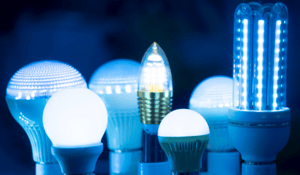It’s really simple actually, and very cheap to produce, which is why there was so much excitement when LED lights were first invented!
The Technical Details: LEDs are composed of two types of semiconducting material (a p-type and an n-type). Both the p-type and n-type materials, also called astringent materials, have been doped (dipped into a substance called a “doping agent”) so as to slightly alter their electrical properties from their pure, unaltered, or “intrinsic” form (i-type).
The p-type and n-type materials are created by introducing the original material to atoms of another element. These new atoms replace some of the previously existing atoms and in so doing, alter the physical and chemical structure. The p-type materials are created using elements (such as boron) that have less valence electrons than the intrinsic material (oftentimes silicon). The n-type materials are created using elements (such as phosphorus) that have more valence electrons that the intrinsic material (oftentimes silicon). The net effect is the creation of a p-n junction with interesting and useful properties for electronic applications. What those properties are exactly depends mostly on the external voltage applied to the circuit (if any) and the direction of current (i.e. which side, the p-type or the n-type, is connected to the positive terminal and which is connected to the negative terminal).
Application of the Technical Details:

When a light-emitting diode (LED) has a voltage source connected with the positive side on the anode and the negative side on the cathode, current will flow (and light will be emitted, a
condition known as forward bias). If the positive and negative ends of the voltage source were inversely connected (positive to the cathode and negative to the anode), current would not flow (a condition known as reverse bias). Forward bias allows current to flow through the LED and in so doing, emits light. Reverse bias prevents current from flowing through the LED (at least up until a certain point where it is unable to keep the current at bay - known as the peak inverse voltage - a point that if reached, will irreversibly damage the device).
While all of this might sound incredibly technical, the important takeaway for consumers is that LEDs have changed the lighting landscape for the better, and the practical applications of this technology are almost limitless.